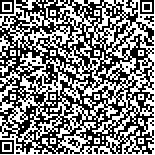| 摘要: |
| 利用光谱辐射传输理论,结合海上同步实测资料,开发出我国海区SeaWiFS资料大气校正模型。经卫星资料处理结果比对,本模型在一类水体,基本消除了412nm和443nm波段离水辐射率小于0的现象;在二类水体,利用临近一类水体的大气条件进行了有效的大气校正;同时建立了670nm、765nm、865nm波段的大气校正模型,这三个波段适用于高浓度悬浮泥沙的信息提取。本模型用于处理我国海区的SeaWiFS资料比美国NASA模型更适合我国海区特定的大气和海洋环境,为SeaWiFS资料海洋水色信息提取和我国海洋一号(HY-1)及风云一号(FY-1C)卫星资料的大气校正研究提供了技术基础。 |
| 关键词: SeaWiFS 光谱辐射传输理论 大气校正 |
| DOI: |
| 分类号: |
| 基金项目:国家863项目资助,818-Q-02、818-11-02号 |
附件 |
|
| THE ATMOSPHERIC CORRECTION ALGORITHM OF SeaWiFS DATA IN CHINA SEAS |
|
MAO Zhi Hua, HUANG Hai Qing, ZHU Qian Kun, PAN De Lu
|
|
Key Laboratory of Ocean Dynamic Processes and Satellite Oceanography, Second Institute of Oceanography, State Oceanic Administration, Hangzhou, 310012
|
| Abstract: |
| A practical atmospheric correction algorithm for the Sea-viewing Wide Field-of-view Sensor (SeaWiFS) is presented, which is based on the radiative transfer models and in-situ data. The radiance received by the satellite was decomposed in four parts which are Rayleigh scattering, aerosol scattering, sun glint radiance and water leaving radiance. The four components values obtained by the model were compared with models in SeaDAS software developed by NASA and in-situ data. The difference of Rayleigh scattering radiance between the model and the NASA’s model is about 5 percent. The distribution patterns of aerosol scattering are similar to that of NASA’s. The water leaving radiances of SeaWiFS six bands are near to the in-situ data. As the atmospheric conditions above case 1 water are used for case 2 water, the model can be used in processing SeaWiFS data of coastal areas where the NASA’s model often fails in atmospheric correction. This model also solved the problem of the negative of the water leaving radiance of SeaWiFS 412nm and 443nm bands. The atmospheric correction model is more suitable in processing SeaWiFS data under the specific atmospheric and oceanic situations in China Seas than models in SeaDAS software. This is very useful in extracting ocean color information from SeaWiFS data and in studying the atmospheric correction models of FY-1C and HY-1 satellite data of China. |
| Key words: SeaWiFS, Radiative transfer model, Atmospheric correction algorithm |
